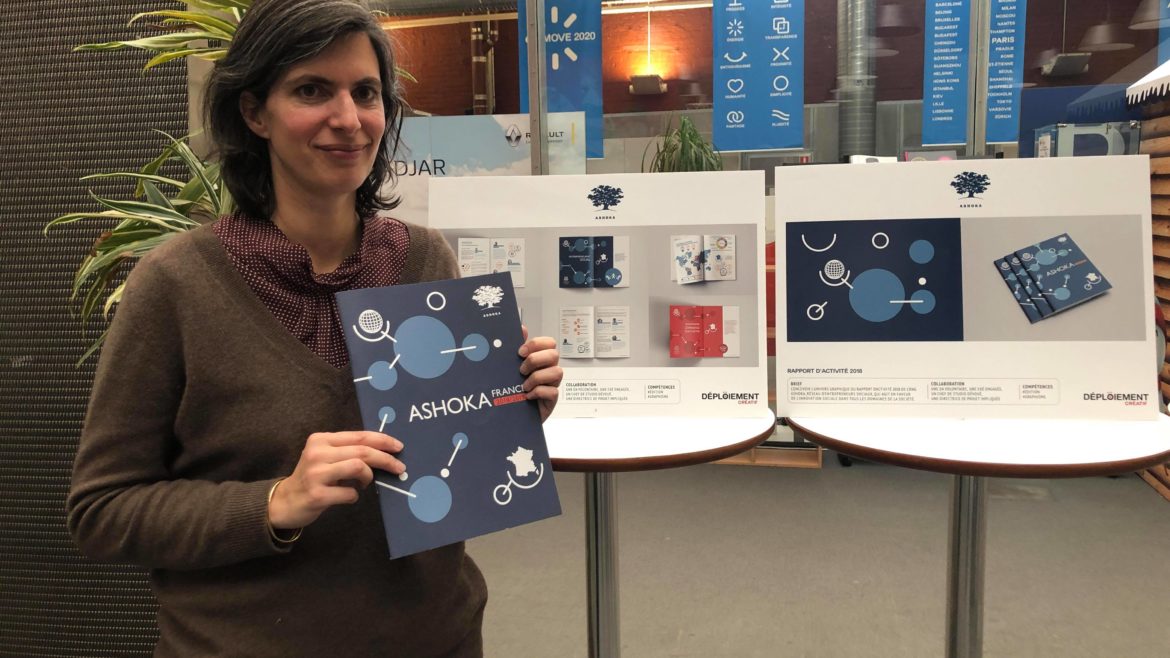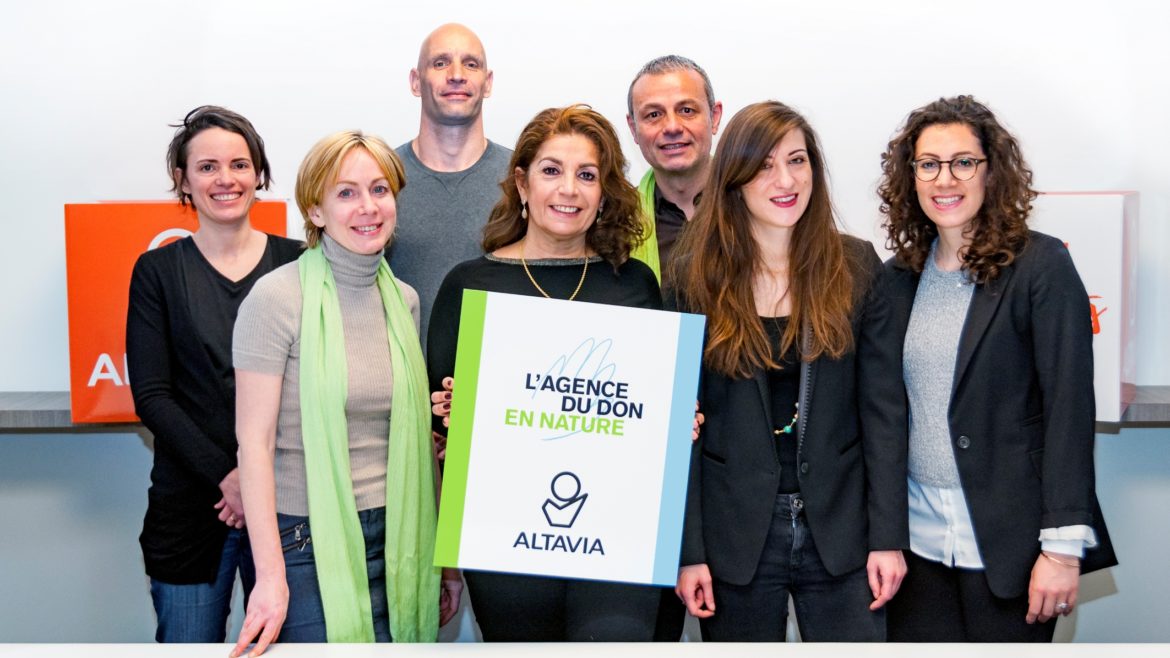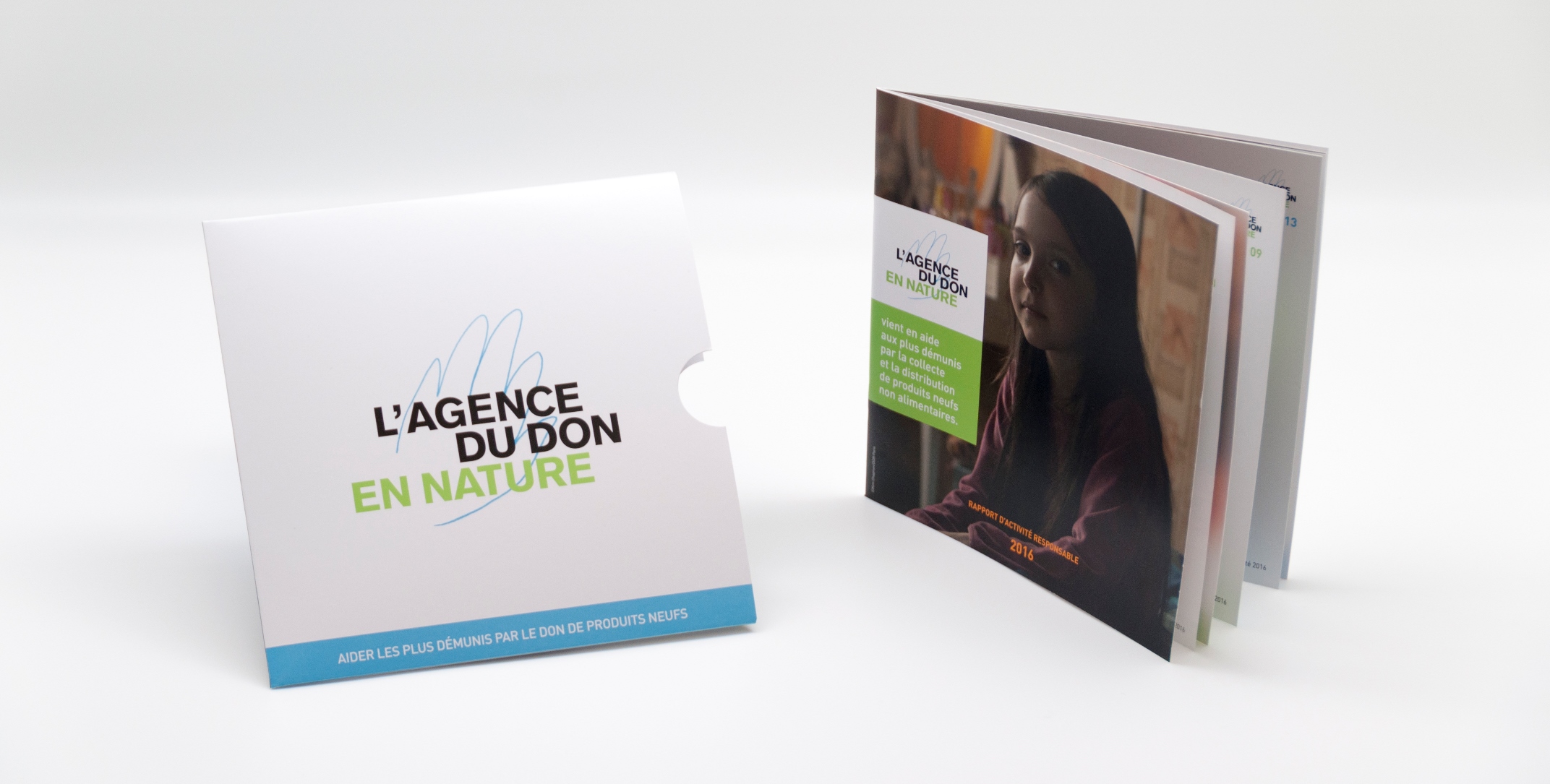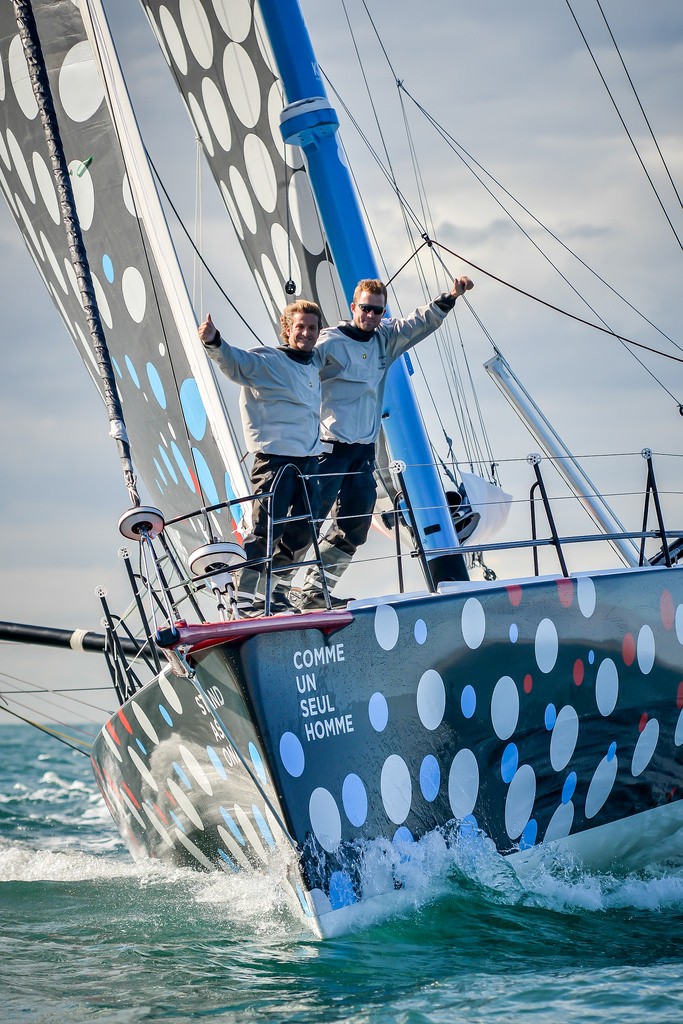With strong local roots in a hundred different areas throughout France and internationally, Réseau Entreprendre finances and mentors entrepreneurs with a high potential to create employment. It all began in Roubaix, in 1986, thanks to one man André Mulliez, who was the Managing Director of the Phildar Group at the time. In the mid-1980s the yarn market was in decline and an increasing number of people were being laid off. His idea: “To create employment, you must create employers”.
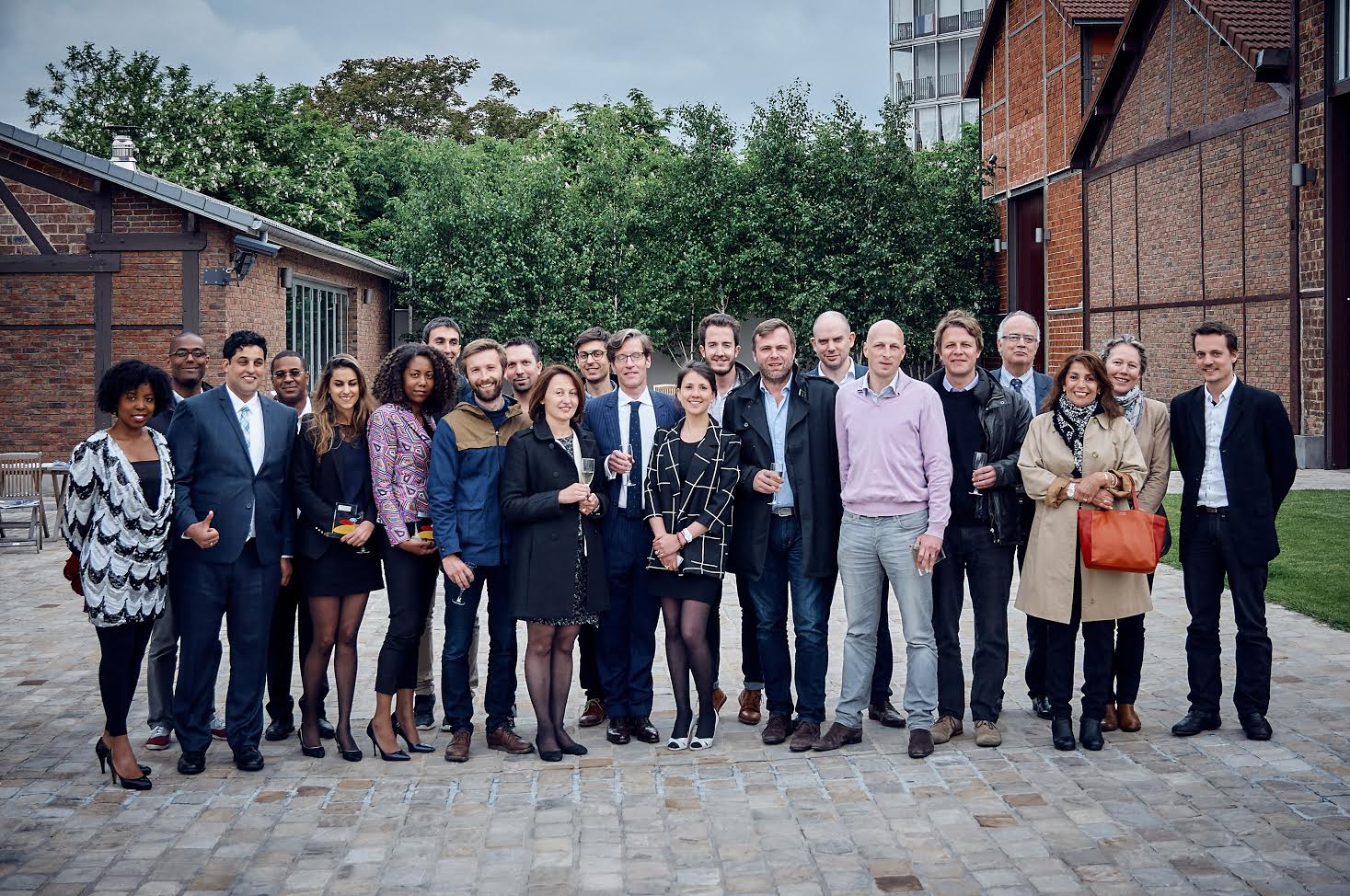
Yasmine Hamraoui, Director of Réseau Entreprendre 93 (1st row – middle) , surrounded by the laureates of 2015 and Régine Palti, Communication and Partnerships Project Manager at Altavia (1st row on the right).
We have met Yasmine Hamraoui, Director of Réseau Entreprendre 93, the association based in the Seine-Saint-Denis French department, of which Altavia has been a partner for more than 10 years. Immediately after the establishment of the association in Seine-Saint-Denis, Altavia joined Réseau Entreprendre 93 as a mentor for young local entrepreneurs. Today, the group continues to support Réseau Entreprendre 93 by the means of a skills patronage in the creation of communication tools for the network.
Interview :
When was Réseau Entreprendre first established in Seine-Saint-Denis?
Réseau Entreprendre 93 was created thirteen years ago and today covers all areas of the department. Seine-Saint-Denis supported us from the beginning and we now enjoy particularly strong ties. Last year, over 50% of the entrepreneurs we supported in Seine-Saint-Denis had set up business in the “Quartiers prioritaires de la Politique de la Ville” (priority areas for urban policy).
Réseau Entreprendre was officially recognised as an Association d’Utilité Publique (an association acknowledged as being of public interest) in 2003. Today it is present throughout France and in recent years has expanded internationally, notably to Morocco, Chile, Tunisia, Switzerland and Belgium.
What is the structure of these associations, and in particular of Réseau Entreprendre 93?
These are local associations of business chiefs. In other words, experienced entrepreneurs and leaders who come together at departmental, regional or national level to share a mission common to the entire Réseaux Entreprendre network, that of mentoring and funding entrepreneurship, notably targeting those entrepreneurs with a high potential to create employment.
How does your funding operate?
The funding we provide is a loan on trust (an unsecured, non-interest bearing loan), financed by the Ile-de-France Region, the Caisse des Dépôts (French governmental financial institution) and our partner banks, together with guarantees from the BPI investment bank. We lend sums of between € 15K and € 50K with the aim of increasing the entrepreneur’s equity capital and to enable them to seek funding from banks, financiers and business angels. This action represents a powerful lever since every euro lent by Réseau Entreprendre enables the entrepreneur to raise another thirteen. This is the real strength of the network: we have now been in existence for 30 years and, over time, have become a recognised label for third-party financiers who consider that if an entrepreneur has been accepted by Réseau Entreprendre, they are twice as likely to still be in existence three to five years later and offer a high potential for job creation. It is a major economic issue in a country such as France, where many companies tend to remain small.
And in terms of support?
We provide mentoring, whether they are creating a new business or taking over an existing one. This is an essential aspect, notably in Seine-Saint-Denis where many industrial companies close simply for lack of a buyer. As time has gone on, we have extended our field of action beyond the creation or take-over phase. We now continue to mentor a certain number of the laureates that we supported in their early days, on into their development stage. This is the case, for example, with Arkose whose founders created an indoor climbing centre in Montreuil two years ago. Today they are at the head of five centres and have just raised over 2.5 million euros with the aim of multiplying the number of establishments by fifteen by the end of the year. At this stage, the problems are different to those encountered when creating a company. So, in the context of development mentoring, we offer entrepreneurs support concerning issues such as governance and growth. Managing a company with a staff of 15 is not the same thing as one with 50, 300 or 1,000 employees. It needs to be planned for!
Réseau Entreprendre reveals and develops talent: we seek out the rare gem and then try to boost their capabilities, helping them to move on from being an entrepreneur to being a business chief.
What are the skills that you rely on to help the entrepreneurs through this difficult phase?
One of the specific characteristics of the network is that the mentoring is carried out by experienced entrepreneurs, who have themselves been through the same development stages. We do not merely look for skills but also and above all, for experience. Creating your own company and developing it requires knowledge not available in either books or business schools; knowledge you can only acquire on the ground!
In practical terms, how is the mentoring organised?
Each month the entrepreneur has a meeting with an experienced business chief. They also have a monthly Entrepreneurs’ Club meeting that offers them an opportunity to break their isolation and get together with others in the same situation. Being an entrepreneur can often mean being very lonely! Our vocation is to create a circle of confidence, one that will enable them to find the solutions to their problems between themselves, in total confidentiality. During these meetings Réseau Entreprendre is also able to bring in outside experts, covering subjects such as HR, finance or governance, to further enrich the entrepreneurs’ own experience. This mentoring lasts for two or three years according to the specific needs of each. The network’s actions are not only strong in terms of quality, they also carry very strong values!

the Commitment Committee, made up of company leaders, unanimously decides to accompany the project leader.
Can you tell us a little about the association’s values?
Firstly, we consider that beyond the project there is always a person, whether this is the mentor or the entrepreneur. For us the individual is paramount!
Next comes the principle of a service that is free of charge: all the help we offer is free for the entrepreneur.
Finally, each of us is a link in a chain. Today our laureates receive, but one day they will in turn become the one who gives. 20% of our mentors are former laureates and this figure is constantly rising. Our chairman is a former laureate who created his company in 2008. It is something that is symbolic and embodies the value that is dearest to us within the network: reciprocity.
In terms of figures, how would you sum up the past year?
In 2016 we received 500 requests and we supported 32 entrepreneurs from 20 different companies. Of these 80% were business creations and 20% were take-overs. 20% of our laureates in 2016 were women. This figure is rising but still remains too low! We are working to try to increase it further. The cultural factor continues to play an important role: women dare less, are more cautious. This is particularly visible in the business plans we receive. In the majority of cases, we know when a business plan has been sent by a woman, the figures systematically have to revised – upwards!
The caution and determination with which women manage their projects have a positive impact on the sustainability of their companies. This is one reason why we would like to mentor more women.
Women entrepreneurs also provide a role-model: the higher the number of women who create successful companies, the more visible they will become and the higher the number of young women who will want to follow their example.
And for you personally, which entrepreneur profile interests you in particular?
I would say those who are self-taught, the young who you are not necessarily expecting and who have an amazing energy and talent! In France, there is a strong tendency to favour those who have followed a certain path, attended certain schools… But it is youth and diversity that are most representative of Seine-Saint-Denis! As a result, a certain number of our laureates are totally outside the standard “pigeon-holes”. This shows that it is also in diversity that wealth and innovation are created, and I think that France would do well to remember it…
What are your targets for 2017?
More women, evidently! And more generally, we are obviously looking to support even more entrepreneurs and to find more business chiefs, high performers who care, to mentor them. Today, over a hundred experienced entrepreneurs have made this commitment in Seine-Saint-Denis and almost 10,000 throughout France. We have supported nearly 200 entrepreneurs in Seine-Saint-Denis and this is only the beginning…
Finally, we would like to develop more partnerships with major companies, such as the wonderful partnership we have with Altavia, who has supported us for so many years, within the framework of a skills patronage and notably in the creation of communication tools for the network.
[/vc_column_text][/vc_column][/vc_row]

